Results 1 to 10 of 31
Threaded View
-
05-05-2013, 10:17 PM #1
 A primer on genuine tortoiseshell
A primer on genuine tortoiseshell
Hey all, I'm nowhere near an expert on this but I've handled a good amount of it and thought I'd share what I know about tortoiseshell, with the hopes to have some discussion / hear what everyone who likes the stuff has to say. I know there's a lot of discussion on it every now and then and wanted to give some examples and concentrate everyone's knowledge into a thread. I won't go into the material properties or production, you can find that on google. What I do want to talk about is what it looks like on razors and some ways to tell it. It's on the rare side, but you do come across it. I have a feeling I'll run out of picture space, so I'll call this part 1.
This is a good resource for starters: TORTOISESHELL: Real or fake? How to tell the difference
Probably the most ubiquitous tortoise-like materials out there are synthetics. Most here have probably heard of the hot-pin test. This is a definitive way to separate a plastic from at least a material of keratin / animal origin. One of the easiest non-destructive tests just takes a second - bug bites. Real tortoise is susceptible to dermestid damage just like horn is, and if it has been a meal, you will see characteristic bites, sometimes tiny, sometimes huge:
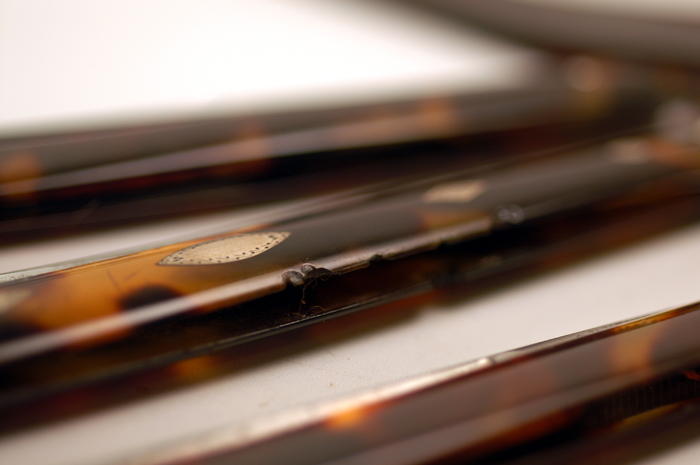
For comparison, here's celluloid faux-tortoise and a lucite example (bottom left), courtesy of Zak:
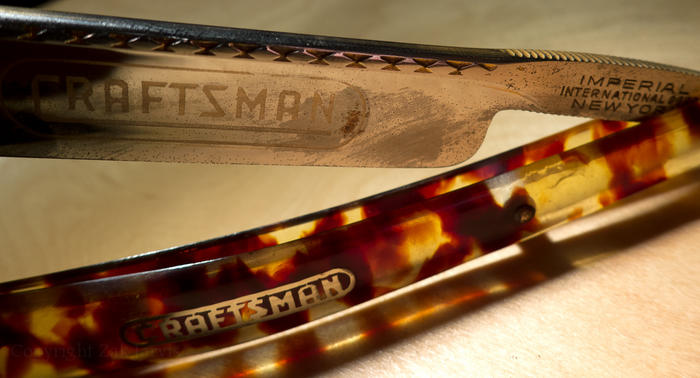
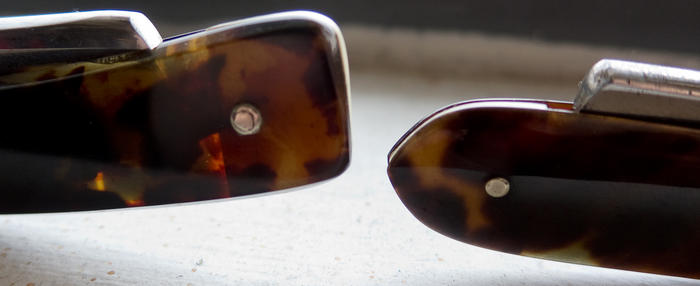
Sometimes it's hard to tell just from looking at it; this is where the pin test comes in. In razors there are some other clues, though these are by no way hard rules. On later real tortoise razors, the pinning is almost always collarless, just as with ivory. A lot of faux plastics are easy to tell once you've seen genuine tortoise. Often the dark parts have sharp edges; tortoise has rather blurred edges.
The horn varieties can sometimes be a little harder to tell, as they will smell very similar to tortoise on the pin test. But there's still some clues. Most obvious, the horn is painted or stained on the surface. This generally will not sink in to the extent that tortoise does. Here is an example of where a bug bite has revealed the blonde horn underneath the staining:

This can also be seen if you look on the reverse of the scale and see that the staining does not go all the way through. Further, these are still often pinned with collars:

Sometimes, the pivot end of the scales will show the typical rough cut of later horn scales versus a thin shaped end, much more common in tortoise scales:
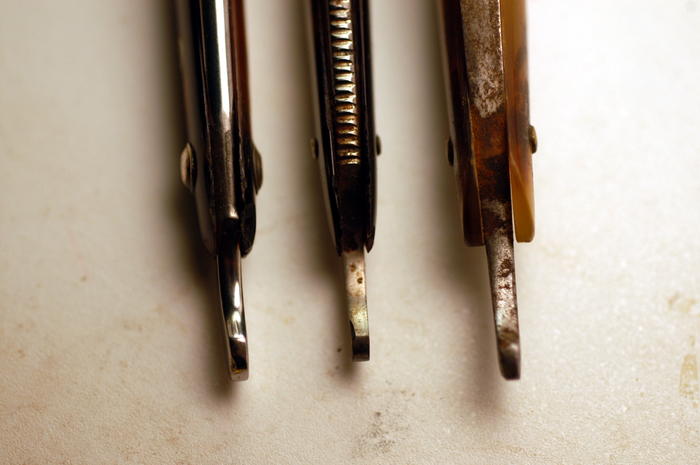
Sometimes also confused is mottled horn. This is not painted on the surface and will have variations in color throughout the scale; however, the patterns are very linear and more diffuse than tortoise:
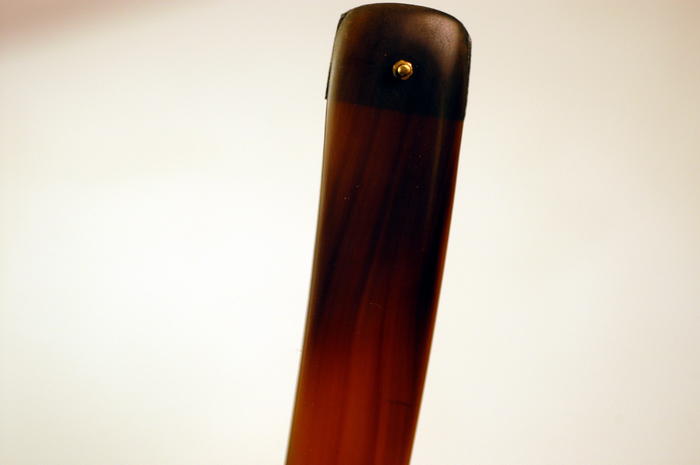
Last edited by ScienceGuy; 05-05-2013 at 10:23 PM.
-
The Following 21 Users Say Thank You to ScienceGuy For This Useful Post:
Cangooner (05-13-2013), carrolljc (06-23-2014), Fikira (09-11-2015), Frankenstein (04-06-2014), Geezer (09-12-2015), goldragon (05-19-2013), gooser (05-06-2013), HARRYWALLY (09-12-2015), jmercer (09-12-2015), manah (05-06-2013), Martin103 (05-05-2013), Matheus (09-14-2015), MikeT (07-03-2016), MODINE (05-18-2013), Mvcrash (05-06-2013), NewellVW (09-12-2015), pfries (05-06-2013), Phrank (12-26-2015), Renspen (05-09-2013), TCMichigander (07-08-2019), Voidmonster (05-05-2013)


 93Likes
93Likes LinkBack URL
LinkBack URL About LinkBacks
About LinkBacks







 Reply With Quote
Reply With Quote